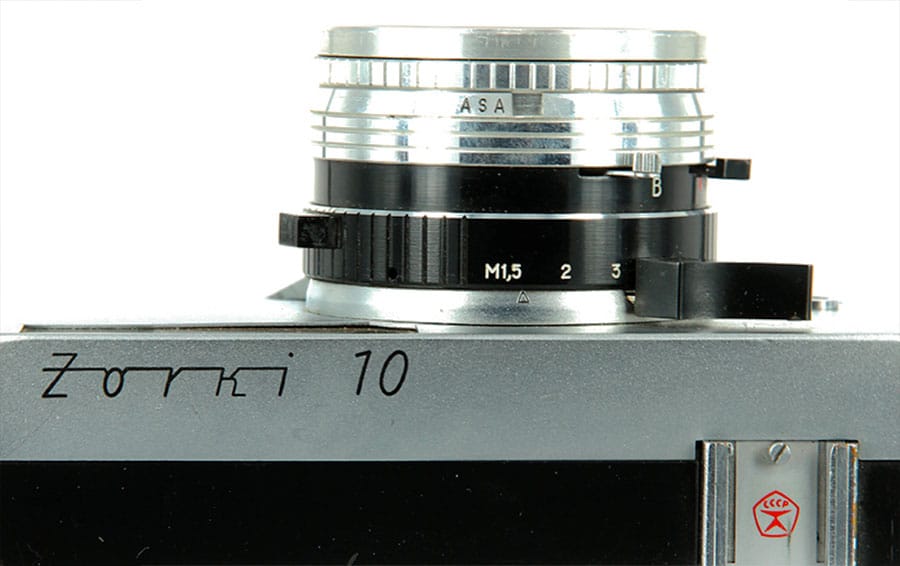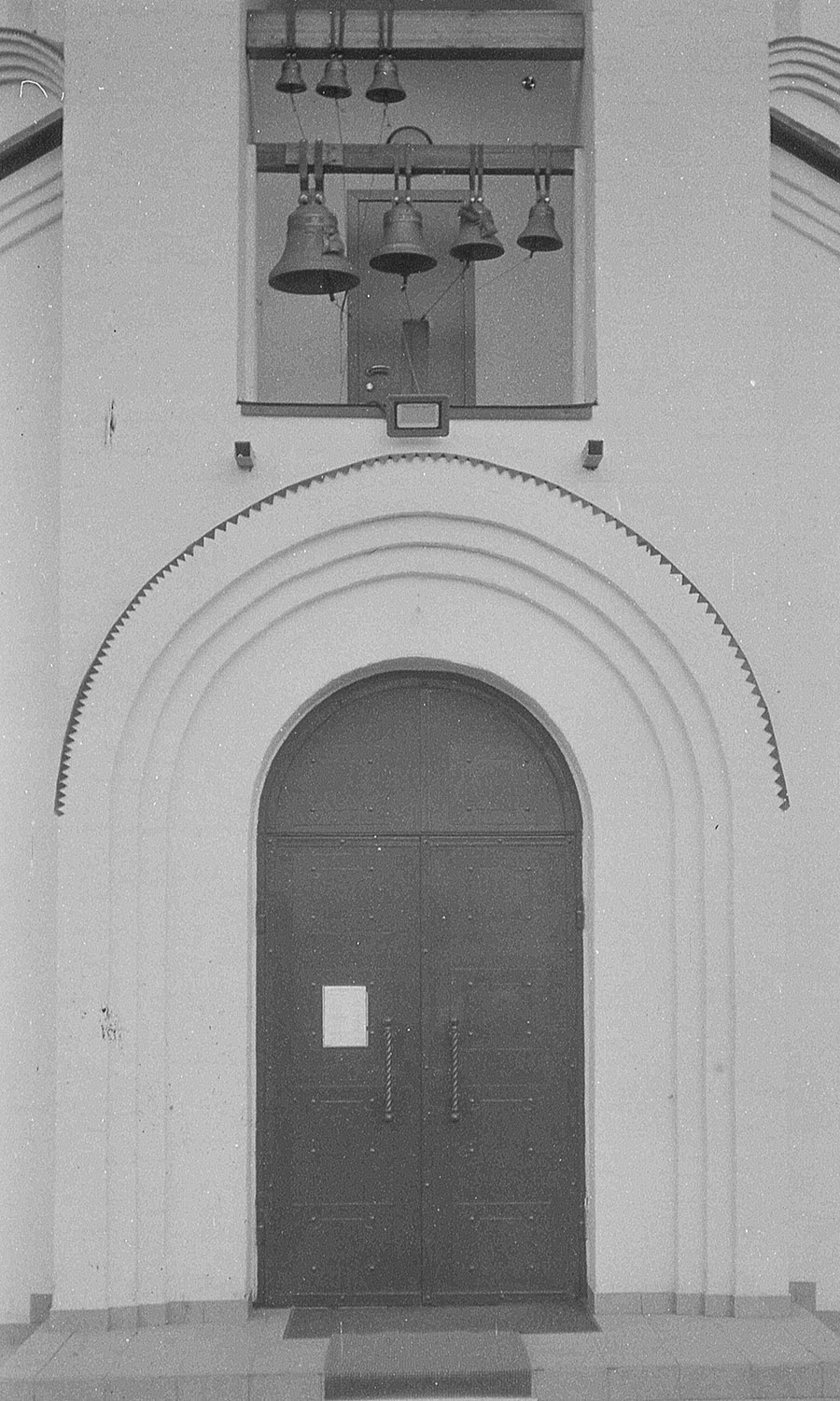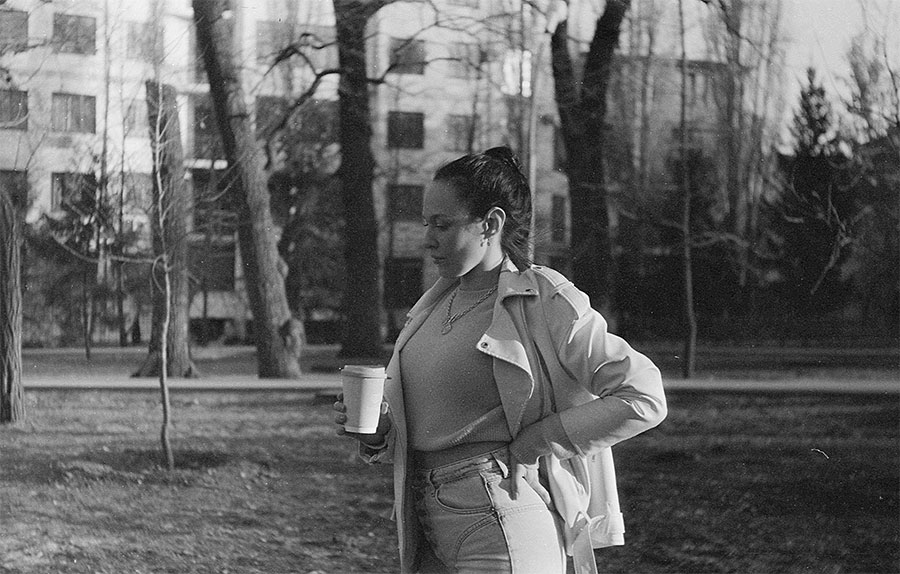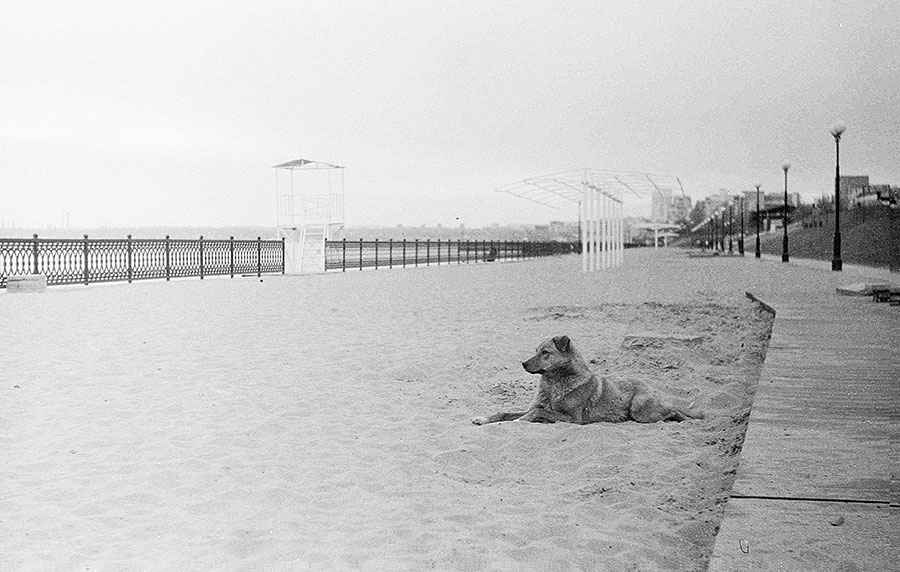Zorki-10
Zorki-10 is a rangefinder camera for 35mm film with fully automated exposure control, produced at the KMZ plant from 1964 to 1978.

The Zorki-10 camera, unlike its predecessors, is fully automatic. This Soviet rangefinder camera was produced in the era when electronics began to take over the world, and the Soviet Union did not want to lag behind this trend.
Zorki-10 Specifications
- Type: 35mm rangefinder camera
- Manufacturer: KMZ plant
- Production period: from 1964 to 1978
- Format: 24x36cm on 135 film
- Lens mount: fixed lens
- Lens: Industar-63 f2.8/45
- Rangefinder base: 38mm
- Shutter: leaf shutter with speeds from 1/30 to 1/250 sec.
- Viewfinder: optical parallax viewfinder combined with the rangefinder
- Lighmeter: selenium light meter
- Flash synchronisation: sync socket “X”
- Selftimer: mechanical
- Weight: 750 grams

The Zorki-10 camera is very unusual in many ways, especially for the Soviet market for photographic equipment of the 60s. Even the appearance of the camera is very unusual, and is very different from most Soviet film cameras of that era.
As already mentioned above, the Zorki-10 camera operates in fully automatic mode. The camera is equipped with a leaf shutter, which also functions as an aperture. Depending on the illumination of the subject, the automation works out exposure pairs from 1/250+f22 to 1/30+f2.8. It is not possible to change the combination of shutter speed and aperture.
The camera can also work in manual mode, but at a single shutter speed of 1/30 sec.

The Zorki-10 camera is equipped with an Industar-63 f2,8/45 lens, which, as we said earlier, is created according to the Tessar scheme, which gives very good sharpness.
Like most other Industar lenses, this model gives a fairly sharp image and very good bokeh. Combined with black and white low-speed film, this lens can produce a truly vintage image.

In this camera, even the fact that most of the controls are located on the bottom is unusual. The film advance lever is located on the bottom of the body and is made in a very unusual shape.
In addition, on the bottom surface of the camera are such elements as a frame counter window, a rewind button, and a rewind pop-up knob.

The camera has a fairly good and clean viewfinder. With it, it is quite easy to focus, although the viewfinder of the Zorki-4 camera seems much more convenient to us.
An arrow is visible inside the viewfinder, which displays the approximate value of the processed shutter speed. With a lack of light, the arrow enters the red sector of the scale.
As with most leaf shutter cameras, most of the controls are located on the lens, also on the bottom.

Conclusion
The Zorki-10 camera is a very interesting device and artifact of the Soviet era.
This Soviet rangefinder camera is unusual in all respects, and that is why it is interesting. But Zorki-10 will be of interest not only to collectors, but also to those who want to use the camera for its intended purpose, that is, take pictures with it.
Despite the unusual design, it is very easy to use Zorki-10. It looks very unusual and stylish, it is pleasant to hold it in your hands, and passers-by will definitely be interested in this charismatic device.
ZORKI-10 PHOTOS

















